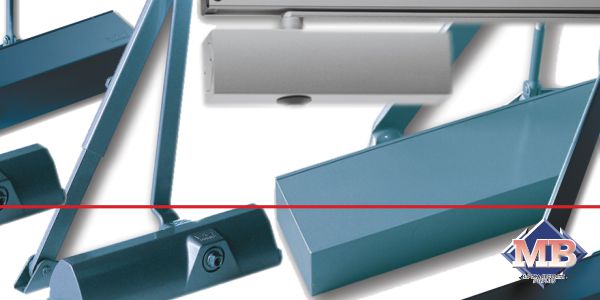How Do I Install A Door Closer?
A door closer is an ideal solution for ensuring:
- Compliance with fire safety regulations
- Controlled door closing to prevent damage, injury or noise
- Security when automatic locks are only activated when the door is closed
- Privacy
- Energy management and controlling airflow
In commercial buildings there can be a huge amount of traffic, particularly in retail, healthcare and education settings, and of course commercial premises are also bound by fire safety regulations. So it is very important that door closers are fitted and that they are suitable and effective.
What types of door closer are there?
The design of your door closer may vary in terms of how it operates. Door closers can be surface-mounted, spring-hinged, automatic or integral/concealed. They also vary in terms of the power size capability, ie. their ability to close a door of a certain size and weight, and to keep it closed.
By far the most popular design is a rack and pinion door closer. These are a combined unit which is fitted to the door and the door frame, and a pivoted arm acts to control the door and ensure it closes in a controlled manner and stays closed. Here we will look at the installation instructions for fitting a typical rack and pinion door closer.
What tools do you need for installing a door closer?
For fitting a rack and pinion door closer you would need a drill, a screwdriver, some screws (usually supplied with the door closer), an installation template (usually supplied with the door closer), a screwdriver and a spirit level.
What preparation is there before installing the door closer?
Make sure the door closer is suitable for the door in question. If it is a fire door the door closer has to be suitable for this type of door, this should be stated on the manufacturer specifications. Also, is the power size sufficient for the size and weight of the door? Is it an in-swinging or out-swinging door? Some designs are only suitable for in-swinging doors, so you need to check this.
Check the condition of the door itself and the door frame. If there are signs of damage, splitting, cracking or the wood rotting, it may not be a good idea to install the door closer and repairs to or replacement of the door and/or door frame may be required.
Installing your door closer
- If you have an installation template, place it in the top corner of the door next to the hinges. Position it in the correct location and mark the holes with a pen. If you don’t have an installation template you can measure the holes from the door closer body and transfer this to the door.
- Mark the holes also for the lever arm in the underside of the door frame, and check they are straight with the spirit level.
- Drill the pilot holes in the door and the door frame.
- Check the holes are straight again and re-mark to adjust this if necessary, it is essential that the unit is installed straight.
- Fix the body of the door closer to the door using the screws provided.
- The two-piece lever arms are known as the shoe arm and the link arm, fix the shoe arm to the door frame and fix the link arm to the top side of the door closer body. Secure each arm with the screws provided.
- To form the pivot, fix the free ends of the shoe arm and the link arm together using the screws provided.
- This should see the door closer fully installed. You should check the speed and the performance of the door closer by testing it several times. Is it operating okay? Does the door speed leave sufficient time? Does it run consistently the same? Is the door closer installed level? You can adjust the tension on the lever arms to change the speed in which the door opens/closes.
- Check also that the door stays closed under normal conditions. If the door is in a draughty corridor or is an external door where there is a wind tunnel, you may find that the door doesn’t stay closed. This is unacceptable and you may need to reconsider the design of the door closer.
If you have successfully followed these steps then you should find you have years of consistent and trouble-free operation of your door closer. It is worth examining your door closer over time and carrying out any small maintenance jobs to ensure it still operates as it should. You may find that screws work loose and need adjusting, particularly where there is high traffic, and if the door gets damaged or deteriorates in condition this will also affect the operation of the door closer, so carry out a regular inspection of this.
* Please note this is a basic guide for informational purposes only, always consult a professional on such an installation.